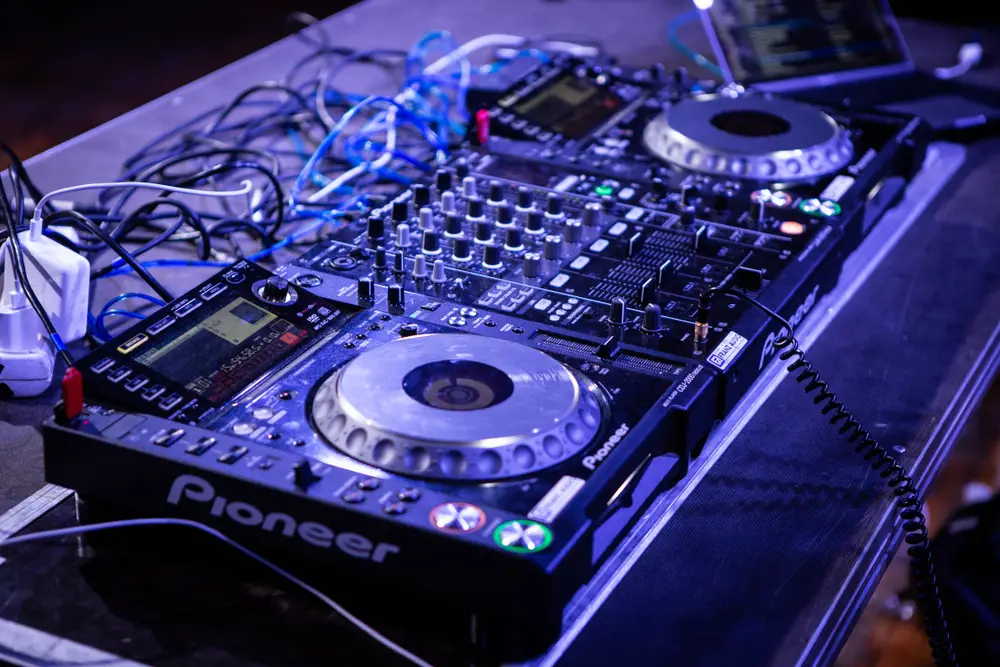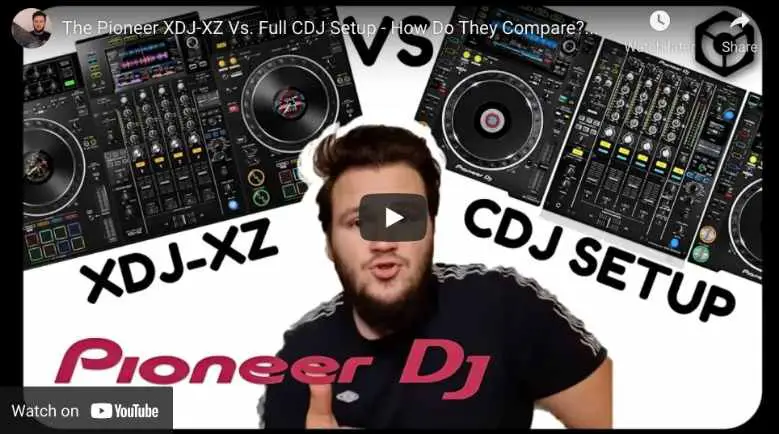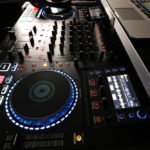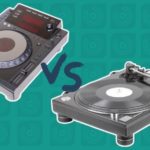DJ hardware is an ever expanding and jargon filled world that can be bewildering for beginners to understand, especially if they have no music or sound engineering experience.
Perhaps you have surpassed the entry-level mixer and you want to start using more professional and complex equipment as your skills increase.
If this is the case, and you have outgrown the entry-level controllers, then the next step up in hardware will be either an XDJ (or a similar model from another brand) or the gold standard of the Pioneer CDJ.
Each model has its own advantages and environments where they are used beset. We have laid out the best features of each and also their drawbacks and outlines which is best for your situation.

Pioneer is the industry standard when it comes to DJ mixing controllers and has created some fan-favorite controllers that have been around since the move from physical mixing to digital mixing happened in the late 90s.
Not only are they a brand you can trust, but they are at the forefront of the industry in terms of controller engineering and have been for some time. Read on to find out why.
What Is A CDJ?
Pioneer’s CDJ has its own unique place in the history of DJ culture. Back in 1994, Pioneer released the CDJ-500 as one of the first and, soon to become, main DJ controllers that operate digitally.
Traditional DJs at the time used physical vinyl turntables, and this is still a popular means of mixing today, often in combination with a CDJ.
Made to accommodate the move from vinyl to tape to CD, hence CDJ, this model is created to emulate physical turntables as much as possible while still merging with the advantageous features of digital mixing such as incorporating looping and FX onto the hardware itself.
Both the XDJ and the CDJ, however, rely on USB sticks now.
In the modern world, the constantly evolving CDJ has become an industry standard for professional DJs and venues alike. What is meant by this is that if you are hired by a club or a venue to do a live mix, it’s very likely that they will be using CDJs plus a mixer.
Venues often expect their DJs to be sufficiently versed in how to use the CDJ hardware.
On the one hand, this is a practical choice as the CDJ eliminates the need for a laptop and mixing software, which many entry-level controllers rely on.
The CDJ also promotes many professional DJ techniques and methods such as beatmatching by ear, not relying on stacked waveforms to beatmatch, manually matching BPM rather than using the SYNC function present on many entry-level controllers.
This approach means that the DJ’s tracks are digitized into the built-in Rekordbox software, getting rid of pesky vinyl crates.
However, the CDJ enables the DJ to treat the hardware as if it was the classic vinyl turntable simply with the addition of some digital features such as FX and looping.
The CDJ essentially represents the best of both digital and manual mixing and is widely regarded as the pinnacle of controller engineering
The CDJ usually comes in one channel units. If you look at an entry-level controller, or even the XDJ they usually have two wheels to control two different channels as you need at least 2 different channels in order to mix two songs together and DJ.
This means that you often have to buy at least two CDJs as well as a separate mixer, plus speakers, in order to DJ with a CDJ. This adds up in terms of price as well as wiring.
What Is An XDJ?
An XDJ is somewhere in between an entry-level controller such as the Pioneer DDJ400 and the CDJ.
While it still uses some ‘all in one’ engineering, like the entry-level controller, it helps the DJ move away from beginner habits and encourages them to move away from mixing software and laptops onto an integrated system and display.
Created in 2015, it seemed Pioneer recognized the need for a stepping stone between entry-level controllers and the CDJ to create a smoother transition in terms of skill as well as money.
In essence, the XDJ has very similar features to the entry-level controller, such as a DDJ400, however, they have integrated the software and the waveform display into the hardware so that the DJ can get used to mixing without software and a laptop.
The XDJ still utilizes entry-level techniques such as hot cues, pad FX, and SYNC buttons, which are not present on the CDJ.
One of the great advantages of an XDJ is that they often have four channels built into them as well. These four channels are often controlled by buttons or sliders so that each individual ‘deck’ can alternately control each deck.
The only problem with having four channels is that it is a bit of an intermediate DJ skill; to be able to manage four channels at once you will need some experience as a DJ first.
Another great advantage of the XDJ is that the mixer is in-built, this means you basically only need a speaker and your memory stick and you will be ready to mix your heart out.
Which Is ‘Better’?
Unfortunately, the answer isn’t so simple as one being better than the other, they both suit different DJs who find themselves in different situations.
It’s important to remember that hardware, and software for that matter, isn’t everything; your skill and professionalism aren’t decided by your hardware and software, it’s based on how you use it.
Just watch Kaytranada’s Boiler Room in Montreal 2014: A DJ who is very skilled and proficient is using an entry-level controller and a laptop and still crushes it performing in a headline slot at one of the most prestigious promotions in dance music today.
Moreover, I’ve seen DJ sets that are worse than this and they are on CDJs. So, my point is, hardware isn’t everything.
Although hardware isn’t everything, the CDJ is still considered the industry standard. So this means that if you do want to be the DJ who performs at clubs and venues, then you should consider getting used to this type of controller.
The CDJs do have some great advantages such as being able to have as many CDJs as your mixer allows, which means the potential of unlimited channels. Moreover, you can also rig up your CDJs with actual vinyl turntables and still mix them using the same mixer.
Some professional DJs love this feature as it allows them to go between physical vinyl and digital tracks seamlessly, all while still mixing them together. However, the CDJs do have their own issues – they just aren’t hugely accessible to even intermediate DJs.
Buying a CDJ isn’t just a one purchase consideration, you need at least two CDJs in order to mix as well as a mixer. Not even mentioning speakers, some of which won’t be compatible with CDJs inputs. CDJs, for good reason, are also pretty expensive.
One CDJ is equivalent to the price of an XDJ, and you need at least two, as well as a mixer. So this is a big consideration if you are an independent DJ.
To move from an entry-level controller to a CDJ can be quite daunting, this is exactly why Pioneer created the XDJ in 2015.
The XDJ, on the other hand, has utilized the same engineering as the CDJ to create a more professional alternative to the entry-level controller, for the home DJ.
What is meant by this is that the XDJ is pretty perfect for someone who only really DJs at home for their friends and at house parties and other independent venues.
The XDJ is optimized for home mixing and independent venues as it requires the least amount of auxiliary hardware in order to mix, you just need speakers and a memory stick.
If you aren’t bothered about getting used to the industry-standard hardware, then the XDJ is potentially your roof in terms of hardware. The other potential downsides of the XDJ are how it clings onto entry-level techniques such as the SYNC button and hot cues.
Some DJs love these features and don’t see the need to drop them. However, some DJs, even those who don’t want to play clubs and venues, seek to get as close to vinyl mixing as possible while using digital hardware.
Final Thoughts
As mentioned, the CDJ is not better than the XDJ on an objective level. It totally depends on your goals with mixing, and how/where you perform.
The CDJ is definitely more culturally and historically important for the culture and is certainly the industry standard for a reason.
However, they can be a little inaccessible to most DJs who don’t have the money to splash out on the extensive setup required and are also a big step up from the entry-level controller.
Pioneer engineered the XDJ for a reason, as an inexpensive stepping stone to the CDJ, or simply an optimization of the home DJ controller.
We hope you love the products we recommend. We may collect a commission if you purchase through one of our links. This doesn't cost you anything extra. If you do, thank you! As an Amazon Associate, I earn from qualifying purchases.







